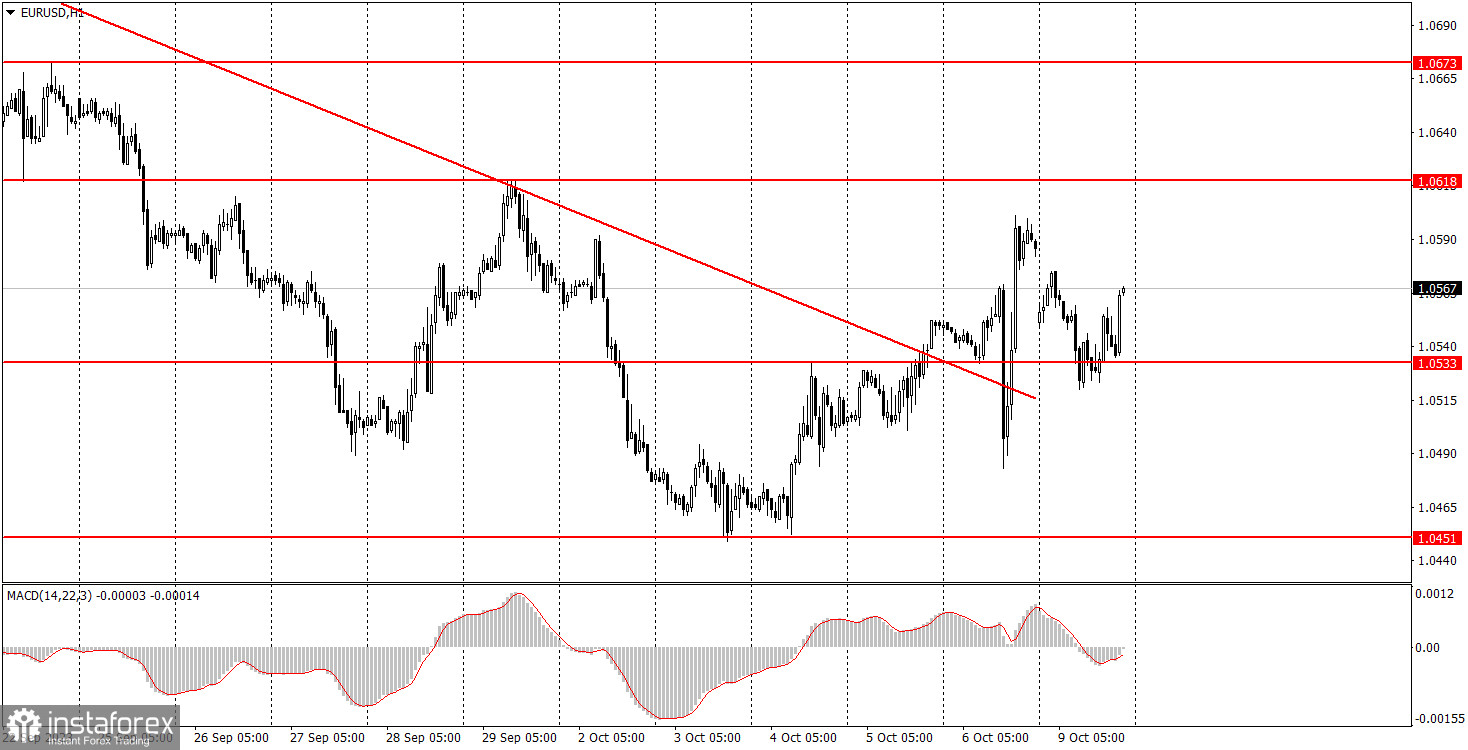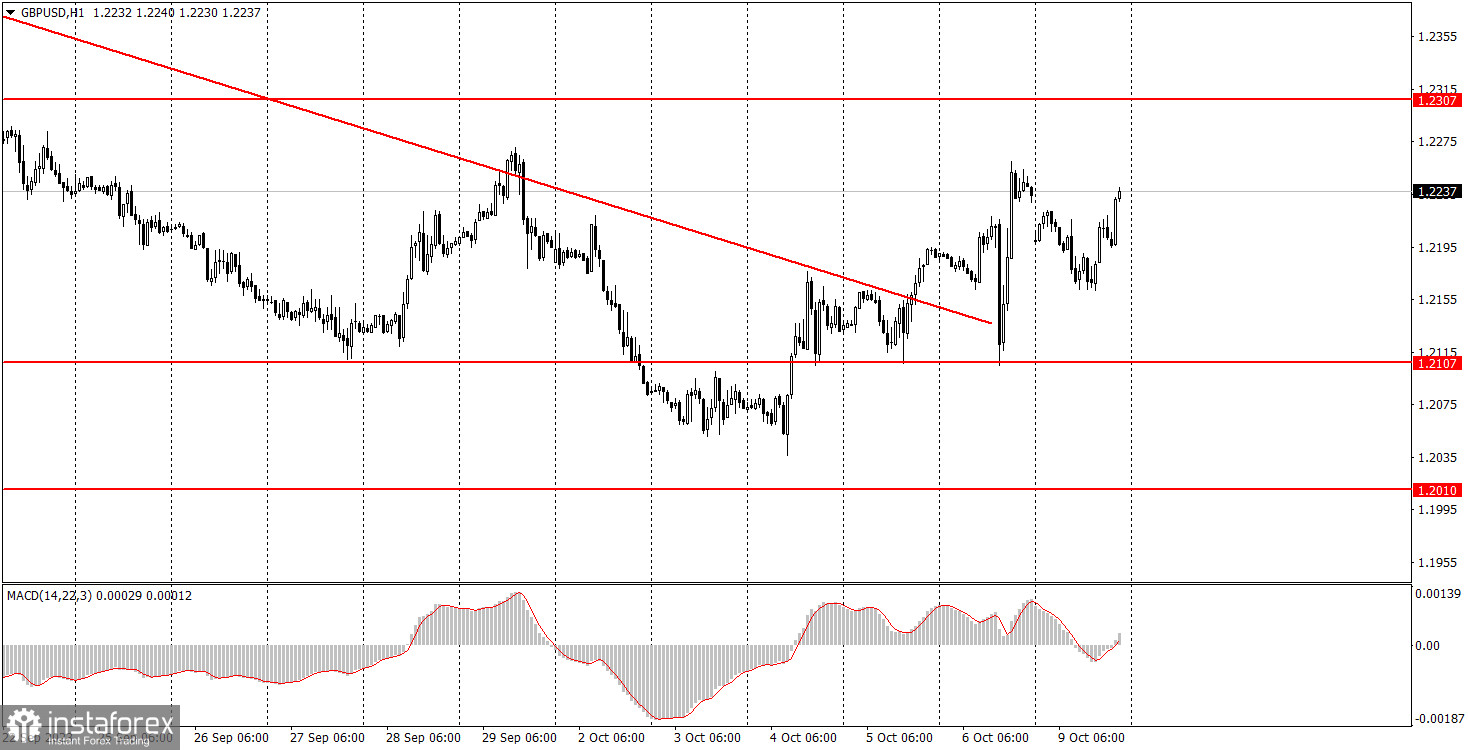Analysis of macroeconomic reports

No macroeconomic events are scheduled for Tuesday, likely setting the stage for another relatively dull trading day. We believe that the ascending correction against a two-month decline should continue for both pairs, followed by a resumption of the primary southward movement. At present, both the Euro and the pound have breached descending trend lines, making growth the most probable scenario.
Analysis of fundamental events
Among Tuesday's fundamental events, a speech by ECB President Christine Lagarde can be noted, but even from such a significant official, we do not anticipate any crucial information. Ms. Lagarde, like many of her Monetary Committee colleagues, may only provide general information to the market. She will likely mention the risks of new inflation acceleration, note the conflict in Israel, and announce that the ECB rate will remain at its peak level for an extended period. However, all of this is already well-known to the market.
In the US, speeches will be delivered by Raphael Bostic, Neel Kashkari, Christopher Waller, and Mary Daly, all representatives of the Fed's Monetary Committee. We expect even less useful information from these speeches. The situation is now evident: the dollar is in a strong position, while the Euro and pound can only anticipate a correction. And the speeches by Bostic, Kashkari, or Lagarde will not be able to influence the overall market sentiment.
General conclusion
On Tuesday, no important events are scheduled either in the US, the EU, or the UK. So, it is unlikely there will be any strong movements. Still, we anticipate a mild upward correction that can intensify during the week. However, the euro and the pound have no foundation for growth except for some technical signs.
Basic rules of a trading system:
1) Signal strength is determined by the time taken for its formation (either a bounce or level breach). A shorter formation time indicates a stronger signal.
2) If two or more trades around a certain level are initiated based on false signals, subsequent signals from that level should be disregarded.
3) In a flat market, any currency pair can produce multiple false signals or none at all. In any case, the flat trend is not the best condition for trading.
4) Trading activities are confined between the onset of the European session and mid-way through the U.S. session, post which all open trades should be manually closed.
5) On the 30-minute timeframe, trades based on MACD signals are only advisable amidst substantial volatility and an established trend, confirmed either by a trend line or trend channel.
6) If two levels lie closely together (ranging from 5 to 15 pips apart), they should be considered as a support or resistance zone.
How to read charts:
Support and Resistance price levels can serve as targets when buying or selling. You can place Take Profit levels near them.
Red lines represent channels or trend lines, depicting the current market trend and indicating the preferable trading direction.
The MACD(14,22,3) indicator, encompassing both the histogram and signal line, acts as an auxiliary tool and can also be used as a signal source.
Significant speeches and reports (always noted in the news calendar) can profoundly influence the price dynamics. Hence, trading during their release calls for heightened caution. It may be reasonable to exit the market to prevent abrupt price reversals against the prevailing trend.
Beginning traders should always remember that not every trade will yield profit. Establishing a clear strategy coupled with sound money management is the cornerstone of sustained trading success.
 English
English 
 Русский
Русский Bahasa Indonesia
Bahasa Indonesia Bahasa Malay
Bahasa Malay ไทย
ไทย Español
Español Deutsch
Deutsch Български
Български Français
Français Tiếng Việt
Tiếng Việt 中文
中文 বাংলা
বাংলা हिन्दी
हिन्दी Čeština
Čeština Українська
Українська Română
Română


